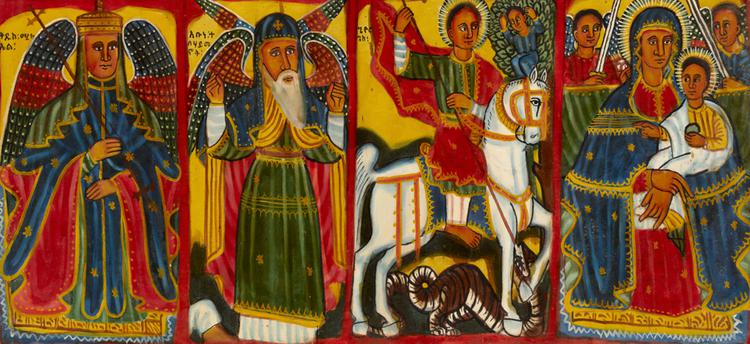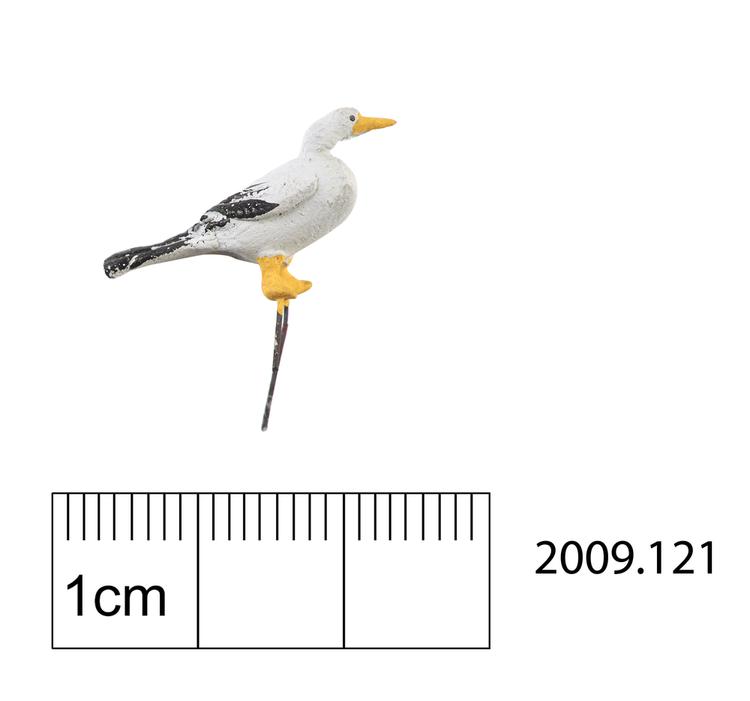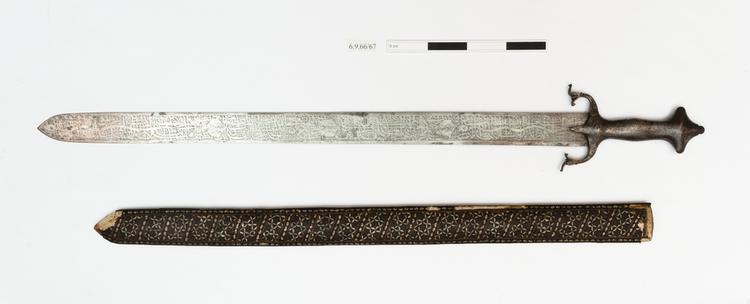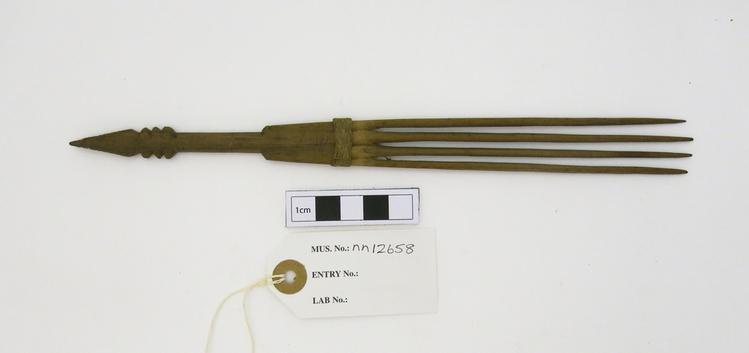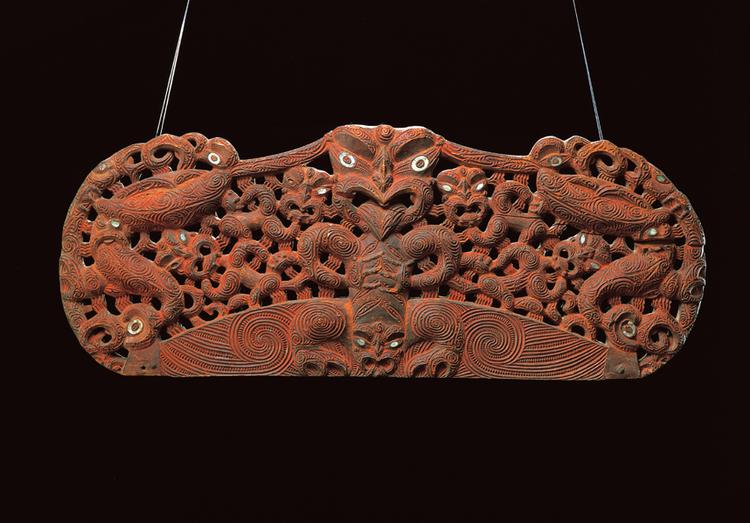
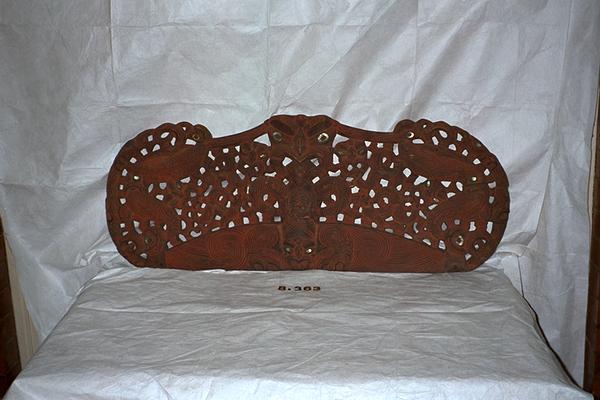
Carved wooden door lintel depicting human and animal figures.
Carved Door Lintel, Pare, From a Maori Meeting House, New Zealand. The Maori are rightly world-renowned for the artistic vision and skill exhibited by their wood sculpture. The pare door lintels of their ceremonial meeting houses (wharenui) rank among the greatest examples of those qualities, and the Horniman Museum’s pare is no exception. It was carved from a single piece of totara wood (Podocarpus totara) in the late 19th Century using steel tools. Like many other pare, the composition revolves around three humanoid figures occupying the centre and two sides of the panel. These figures represent significant ancestral members of the iwi (Maori clan) or hapu (sub-clan) that constructed, owned and used the wharenui it was originally part of. The central figure of pare lintels is usually (as here) female, and there were good religious reasons for this. Men and women (and their genitals particularly) were believed to embody the opposed ritual states of tapu (taboo, closed off) and noa (open, free) respectively. Senior women played an important ceremonial role in removing the tapu state of newly-carved boats, meeting houses, store-houses and so on, making them spiritually safe to use. Similarly, by walking under the vulva of this female image, visitors entering the meeting house were ritually purified and brought into the community. Wood. Later 19th Century. Bought in 1908 from the art dealer S. G.Fenton.



